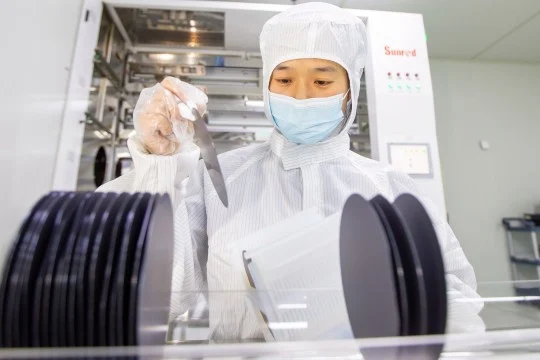In a world where speed is everything – from lightning-fast internet to real-time AI decisions – Chinese scientists have quietly set a new benchmark that might just change how we store and use data forever.
Meet “Poxiao”, which means Dawn in Chinese. It’s the name of a tiny yet groundbreaking memory chip developed by researchers at Fudan University, and it’s making waves across the tech world. Why? Because it’s the fastest flash memory ever created, capable of erasing and rewriting data in just 400 picoseconds – that’s a trillionth of a second. Blink, and it’s already done.
To put that into perspective, today’s flash memory takes hundreds of microseconds to do the same job. What this means is simple yet mind-blowing: Poxiao is over 100,000 times faster.
The catch? Right now, the prototype only stores a few kilobytes – not even enough to hold this full article. But it’s not about how much it stores yet – it’s about how it works. And it works in a way that could completely redefine what we think of as memory and storage.
For decades, scientists have been trying to make flash memory faster. The big roadblock? Traditional methods involve a “warm-up” phase where electrons are gradually sped up before they can record data. That’s slow. And there’s a limit to how fast you can go with that model.
The team at Fudan didn’t just tweak the old method. They threw out the rulebook.
Liu Chunsen, the project’s lead scientist, explained: “If we had kept relying on traditional theories or just swapped out materials, we would’ve hit a wall. So we started from scratch.”
Their new approach, called “2D-enhanced hot-carrier injection,” lets electrons jump instantly from slow to fast – no warm-up needed. That means data can now be stored at speeds once thought impossible.
And here’s where things get even more exciting.
Unlike existing storage tech – where we split memory into “fast but temporary” (like DRAM) and “slow but lasting” (like flash drives) – Poxiao blurs that line. It’s both incredibly fast and capable of long-term data storage. Imagine a world where your phone, your laptop, and even AI systems don’t need separate memory systems. Everything just flows.
This development has been a long time coming. The Fudan team started working on this idea back in 2015, and it’s taken nearly a decade to bring it to life. By 2021, they had the theory. In 2023, they broke through the physical limits of silicon-based memory. And now, in 2025, they’ve unveiled the first working chip.
Today, it’s small. Tomorrow, it could be everywhere.
The researchers hope that within the next five years, Poxiao will grow from kilobytes to tens of megabytes, be licensed, and move toward commercial production. Once it scales, it could revolutionize how computers, smartphones, and AI systems operate, eliminating bottlenecks and opening up new possibilities in speed and performance.
So yes, Poxiao may be small – smaller than a grain of rice – but it might just be the dawn of a new era in computing.








